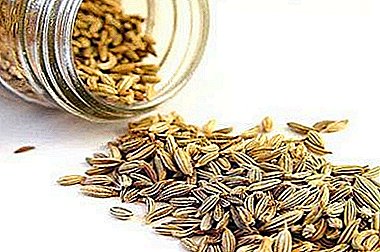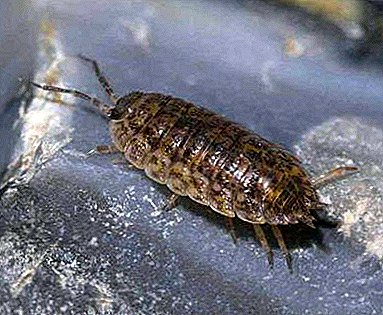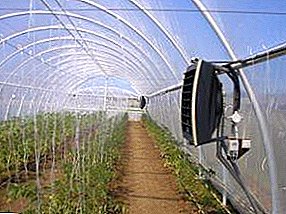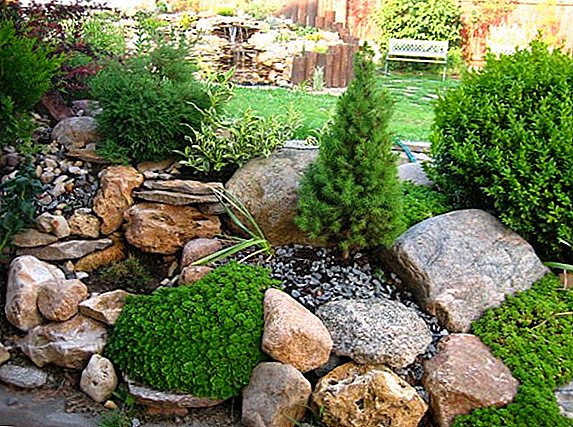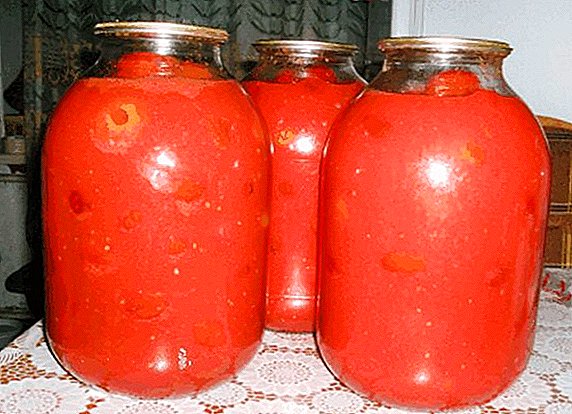 Ripe tomatoes, if they are fresh, just plucked from the bush, sprinkled with a pinch of salt - perhaps the best food that summer gives us. But a tomato is a seasonal vegetable, and tomatoes sold in a supermarket differ in consistency from wet cardboard. If you want to have the opportunity to enjoy the aroma and taste of summer tomato in winter, prepare tomatoes in your own juice for the winter according to our recipe.
Ripe tomatoes, if they are fresh, just plucked from the bush, sprinkled with a pinch of salt - perhaps the best food that summer gives us. But a tomato is a seasonal vegetable, and tomatoes sold in a supermarket differ in consistency from wet cardboard. If you want to have the opportunity to enjoy the aroma and taste of summer tomato in winter, prepare tomatoes in your own juice for the winter according to our recipe.
About the benefits of billet
Your own harvesting of tomatoes for the winter will greatly benefit you and your family:
- Firstly, tomatoes in their own juice retain useful mineral salts, trace elements and most of the vitamins.
- Secondly, during the heat treatment in the fruits of tomatoes, the content of the natural antioxidant lycopene, which prevents the development of diseases and slows down aging, increases.
- Thirdly, it is profitable. Winter tomatoes from the store shelf can not be compared with the fruits taken from their own beds or good tomatoes, bought at the market. In this case, canned goods will come out cheaper, and you can easily and easily cook a variety of tomato sauces and dressings.
Before you start canning tomatoes in their own juice, carefully read the entire recipe, prepare the necessary inventory and the right amount of ingredients.

Kitchen appliances and utensils
For canning tomatoes in your own juice, you will need:
- glass jars, best capacity from 700 ml to a maximum of 2 liters;
- tin covers for preservation with rubber seals;
- cover with holes and spout for draining the liquid from the cans;
- pots: two large - for sterilizing jars and boiling juice and one small - for sterilizing lids;
- grate in a large pot - to install cans;
- manual screw juice extractor;
- lift tongs;
- knife.
Tomatoes are harvested in different ways: pickled, salted (even green), pickled, made jam and frozen.
Ingredients Required
Before embarking on conservation, stock up with all the necessary ingredients:
- tomatoes;
- salt;
- sugar.

Features of product selection
For preservation to come out delicious, products for it must be carefully selected. Tomatoes need to be taken at the peak of ripeness, dense, medium-sized, if possible the same size, without cracks, stains and growths. Fruits can not be selected so carefully for making juice - they can be larger and with some defects. Salt is better to take a large, non-iodized, sugar - refined sand, and it must be dry.
Step-by-step recipe with photos
How to close the tomatoes in their own juice - simply and step by step.
Important! Getting started, carefully inspect the prepared dishes and materials. The glass should be free of nicks and cracks, the lids should have smooth edges and fit well to the necks, the rubber-seals should be well-suited to them, and the metal tools should not be chipped.
Tomato preparation
Selected tomatoes are carefully washed and cut the stalk.

Did you know? European countries have long prevented the cultivation of tomatoes, because they are not mentioned in the Bible.
Twisting
Simultaneously with the preparation of tomatoes prepare tomato juice for pouring. To do this, cut the tomatoes into pieces and pass through a juicer.

Learn how to procure blueberries, cherries, gooseberries, aronia, sea buckthorn, viburnum, melon, apples, cranberries, sunberry, currants, apricots, strawberries, green onions and garlic, spinach, zucchini, asparagus beans, arugula, pepper, coriander, parsnip.
Boiling juice
After squeezing the juice, put the pot with pouring on the fire and add sugar and salt to it - 1 tablespoon of salt and 1 teaspoon of sugar per liter of juice (although it is possible to close the tomatoes without salt and sugar). After the juice boils, it is kept on the fire for about 10 minutes, the foam is not removed.

Sterilization of cans
Wash dishes and lids thoroughly with soda or soapy water and rinse with clean water. The covers are well wiped and dried.
For sterilization, a grate is laid at the bottom of the pan, jars are installed, water is poured almost under the neck, and the water is brought to a boil. Boil 10 minutes. In the same way, in a small saucepan, the lids are sterilized together with seals.
Putting tomatoes in jars
Prepared tomatoes loosely placed in sterilized jars, one at a time removing them from the hot water with forceps.
Then the tomatoes are poured with boiling water in a volume approximately equal to half the volume of the cans, so that the can is filled to the top with water, and the cans are covered with sterilized lids. After 10 minutes the lids are removed and the water is drained. 
Important! Hot cans can be put only on a wooden tabletop or on a towel. Hot glassware placed on a metal or stone surface may burst..
Pouring juice
Boiled cans with tomatoes are poured with boiled juice to the top, ensuring that no air bubbles remain in the container. 
Roll up
After the cans are filled, they are covered with sterilized lids and rolled up with a machine.
Closed cans are placed with the neck down and they are looking to see if there are any bubbles trickling from the lid, indicating that it is not tight. When the preservation is cool, you need to try with your fingertips to remove the lid from the can. If you jumped - she badly rolled up. If the lid "claps" when pressing on its center with a finger, this is also a marriage - either the dishes were not hot enough during seaming, or the lid lets air through.

Storage conditions
Store canned tomatoes in a cool dark place. Labels with the date of preservation are glued to the finished preservation, and the covers are wiped with a clean, dry cloth. If canned food is stored in the cellar or basement, a few drops of engine oil can be applied to the cloth - then a thinnest water-repellent film is formed on the metal, protecting it from rust.
Did you know? Tomato sauce - the most common filler for canned food. They are poured fish, meat, beans, stuffed vegetables and many other types of products.
Closed canned food is stored throughout the year. After the lid is removed, the tomatoes should be refrigerated and consumed within two weeks.
Tomatoes in their own juice - a simple recipe that will allow you to enjoy the most delicious tomatoes, tomato puree and home-made sauces in winter.



